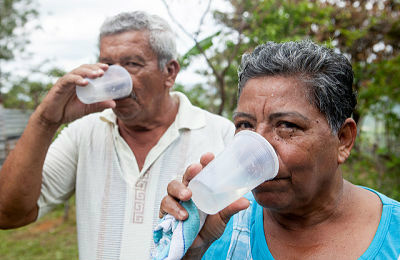Eight Facts About Water Quality in Panama

As one of the most prosperous and developed countries in Central America, Panama is a leader in the area regarding sanitation and water quality. Current estimates say that 93% of Panamanians have access to an improved water source, while 69% have access to improved sanitation. Despite these numbers, there have been many challenges in recent years pertaining to water quality in Panama, especially in rural areas.
- Many of Panama’s improvements in water quality occurred in the 1990s after Ernesto Perez Balladares was elected president in 1994. The privatization of water and electric companies helped to improve conditions as the country continued to invest in urban areas.
- Data from the World Bank showed an increase in the percentage of those that have access to an improved water source from 83.8% up to 94.7% between 1990 and 2015.
- The Instituto de Acueductos y Alcantarillados Nacionales (IDAAN) has been responsible for water quality in Panama for more than 50 years. IDAAN recently set up a tariff system to help cover investment costs as their expenses increase.
- In 2013, 840,000 of the country’s population of 3.8 million did not have 24-hour access to water, while 600,000 lacked access to a potable supply, and 30,000 relied on tank trucks to deliver drinking water.
- A 15-day rainstorm in December of 2010 created a clog in purification equipment in a water treatment plant, resulting in a month-long shutdown that hindered more than a million residents’ access to water in Panama City.
- Recent studies about the effects of climate change have suggested that periods of flood and drought may threaten both Panama’s water quality and the water supply in the Panama Canal. This may pose a huge threat to Panama’s shipping industry, as it takes 52 million gallons of water to move just one ship through the canal.
- One recent threat toward water quality in Panama has been the agricultural runoffs in rural areas that may contain pesticides, animal feces and other contaminants. After facing pressure to confront this issue in 2015, Panama’s National Assembly created the Ministry of the Environment to focus on giving rural residents consistent access to clean water.
- If present trends continue, Panama hopes to increase drinking water coverage for both urban and rural areas above 90 percent by 2020.
While the country has made tremendous progress in the last few decades, water quality in Panama remains an issue due to poor response to problems such as drought and runoff. In the near future, Panama will have to respond to changes brought about by climate change and other factors to ensure the continued health and prosperity of their nation.
– Nick Dugan
Photo: Flickr
